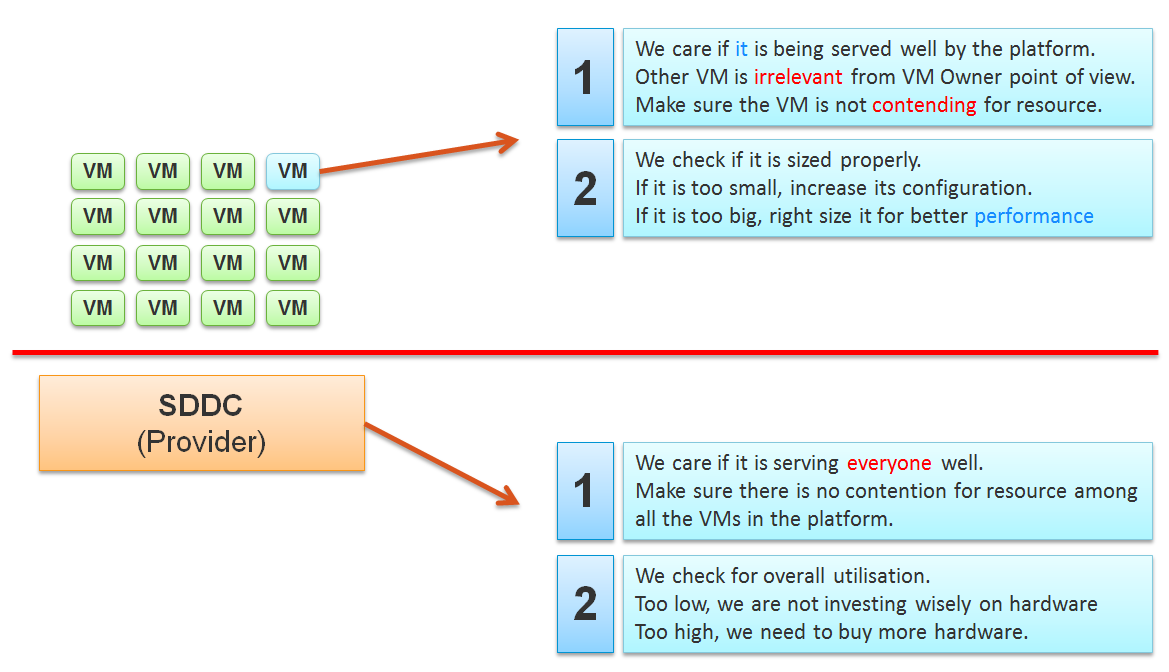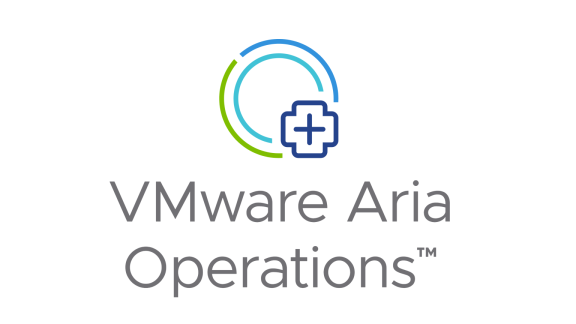Capacity management changes drastically with virtualization. In this series of posts, we will explain why it is one of the areas that is greatly impacted by virtualization.
We will cover the following:
- Why capacity management is split into 2 distinct areas
- How you should perform capacity management at the VM level
- How you should perform capacity management at the infrastructure level
We explain how each component (compute, storage, and network) gets effected by this change and how you should plan for it.
Test drive vSphere with Operations Management in your environment to deliver consistent management
Shift in Capacity Management
The changes to capacity management can be largely grouped into 2 areas:
- Operationally, virtualization changes the IT infrastructure team from system builder to service provider. The application team no longer own the physical infrastructure, and it is now a shared infrastructure. This creates a two-tier capacity management:
- At the VM level, capacity management is done by the application team. They determine the size of their VM, and then buy the capacity from the infrastructure team. They need to adjust the size, as oversizing leads to performance issues.
- At the physical infrastructure level, the infrastructure team must perform capacity management as a single team. The joint team must take care of computing, networking, storage, and DR. The mindset has to change from that of a system builder to a service provider.
- Architecturally, the infrastructure moves from a bespoke system to standardized hardware. The application team no longer need to dictate the specifications of the hardware. For example, they do not specify a server brand, model, and CPU frequency. They can only specify how many virtual CPU they need. Sometimes, especially in a large environment, they can only choose small, medium, or large vCPU, and all of these have been preconfigured.
The following diagram shows the two layers and what matters for each layer.
Once you split capacity management into the two distinct layers, it will become natural and will transform the infrastructure team into the service provider model. You need to see the application team as a customer who does not need to know about the detailed specification of your infrastructure. You provide them a service. To achieve this, you need to unify the three components (compute, network, and storage) as one integrated capacity planning. It is no longer sufficient to look at them as 3 separate components managed by 3 different teams.
In the next post, I will provide some tips on doing capacity management at the VM level. After that, we will review capacity management at the Infrastructure level.
Note: This post is adapted from the vRealize Operations Performance and Capacity Management book by Iwan ‘e1’ Rahabok.











